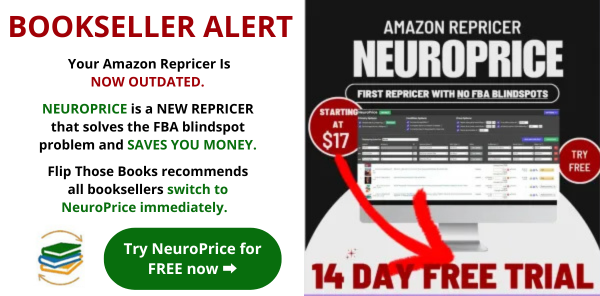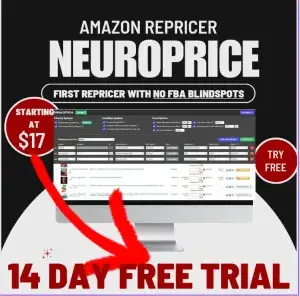Flip Those Books is an Amazon Associate. As an Amazon Associate we earn from qualifying purchases. We may also earn commissions if you purchase products from retailers after clicking on a link from our site.
Determining a good sales ranks for books can be a bit tricky. Not only do you need to know what a certain sales rank means in terms of overall demand, you also need to make sure you’re getting an accurate representation of that demand by looking at the right sales rank data.
A good sales rank for books on Amazon is anything under 1,000,000. This does not mean you should only sell books with sales ranks under 1,000,000 though — there are quite a few factors that can make a book with a sales rank over 1,000,00 worth buying.
The rest of this article will explain everything there is to know about Amazon book sales ranks:
- Current Sales Rank vs. Average Sales Rank
- What different sales ranks actually means in terms of overall demand.
- The factors that can make a book with a sales rank above 1,000,000 worth purchasing.
Note: This article requires that you at least have a surface level understanding of Keepa. If you don’t, I recommend reading this excellent guide from FullTimeFBA.com on how to understand Keepa graphs.
Current Sales Rank vs. Average Sales Rank
Before you even begin to look at the what different sales ranks mean in terms of demand, you need to understand the difference between current sales rank and average sales rank.
The current sales rank is a book’s ranking in Amazon’s catalog at this very moment. This is key. A book’s current sales rank isn’t necessarily indicative of its overall demand.
Take this example of a book that sells twice per year:
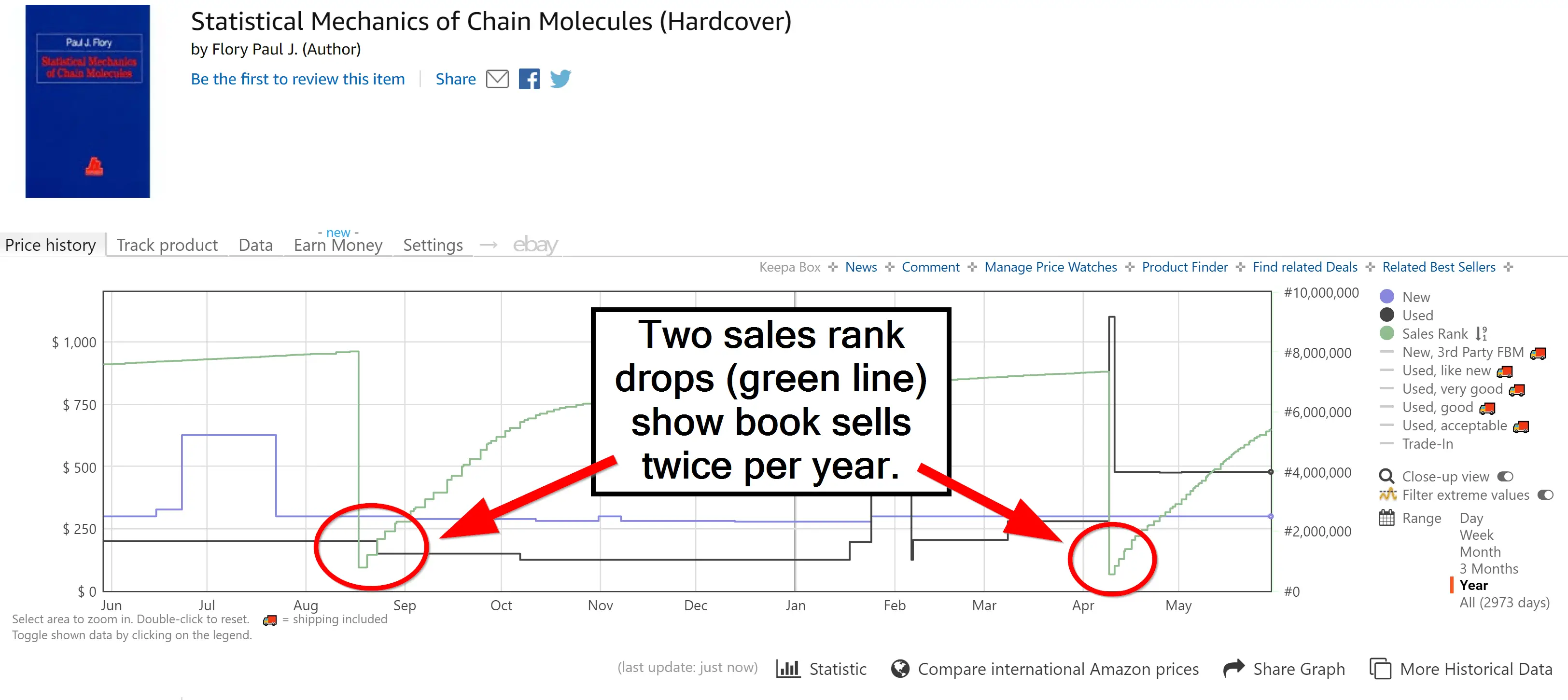
Each time this book sold, the sales rank plummeted from over 7,000,000 to 500,000.
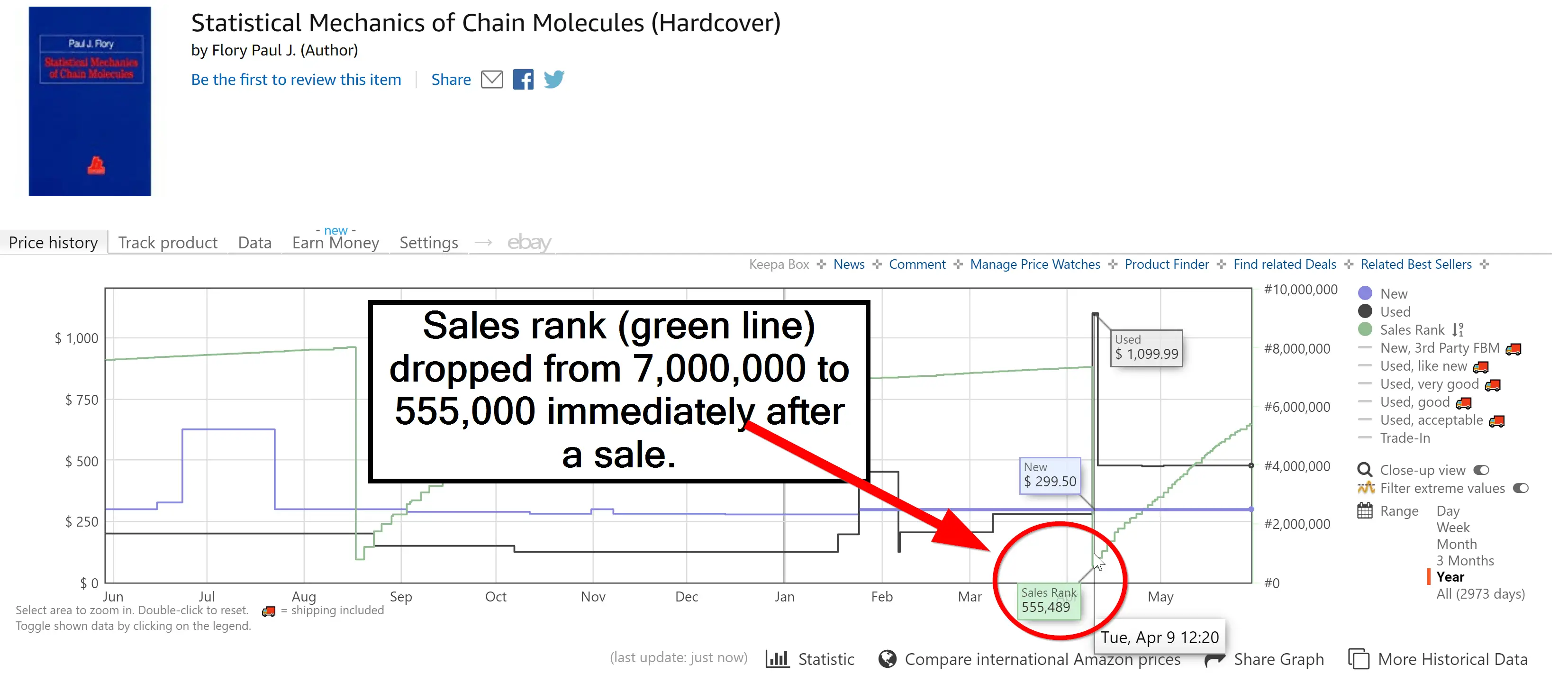
A sales rank of 500,000 typically means that a book is selling at least once a week. If you were to scan this book while out sourcing a few days after this book sold, you might incorrectly assume the book was selling at least once a week. As you can see, that would be a wildly inaccurate assumption.
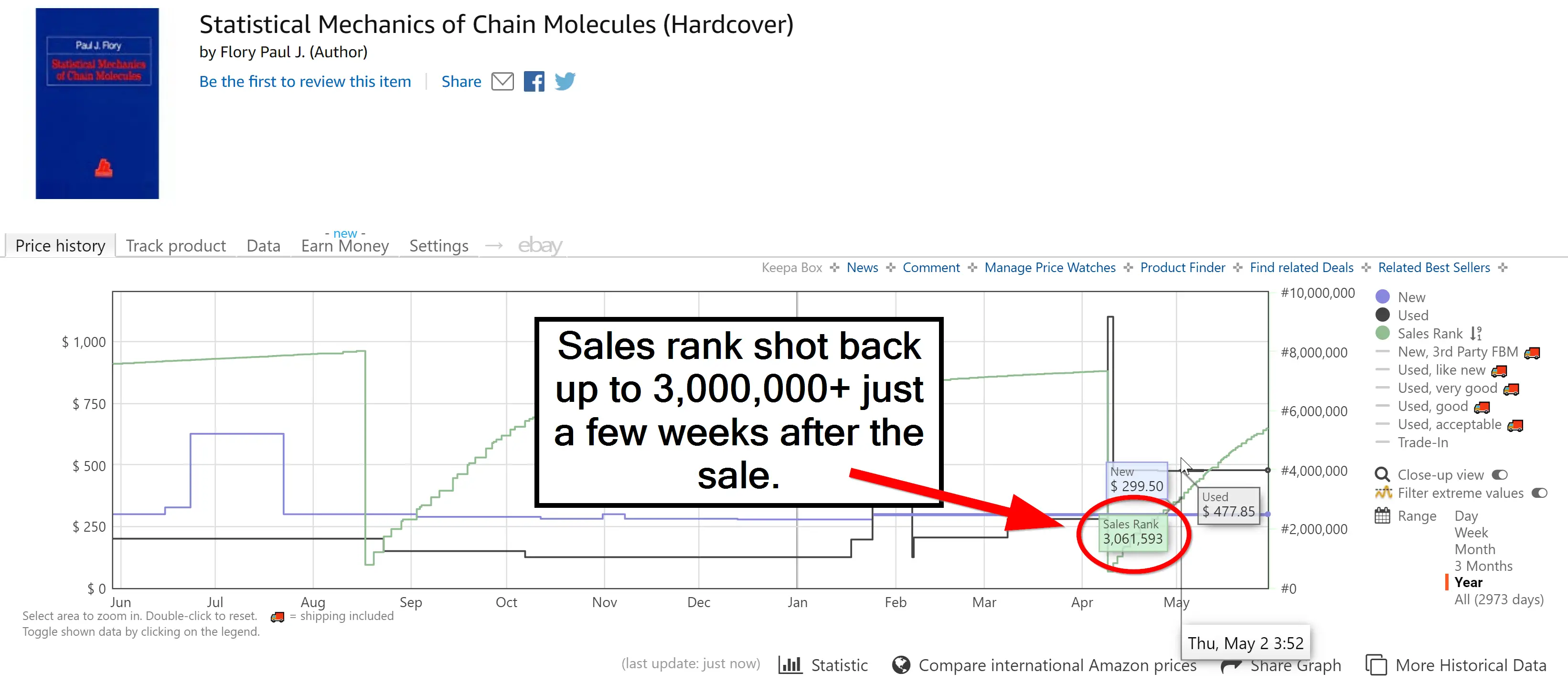
The misleading current sales rank didn’t last long. Within a few weeks, the sales rank was back over 3,000,000 and well on its way to its former position at 7,000,000+.
This is why you can’t rely on current sales rank to gauge a book’s demand. While it’s usually accurate, you’d need to look at the average sales rank to confirm that the current rank accurately reflects how fast a book will sell.
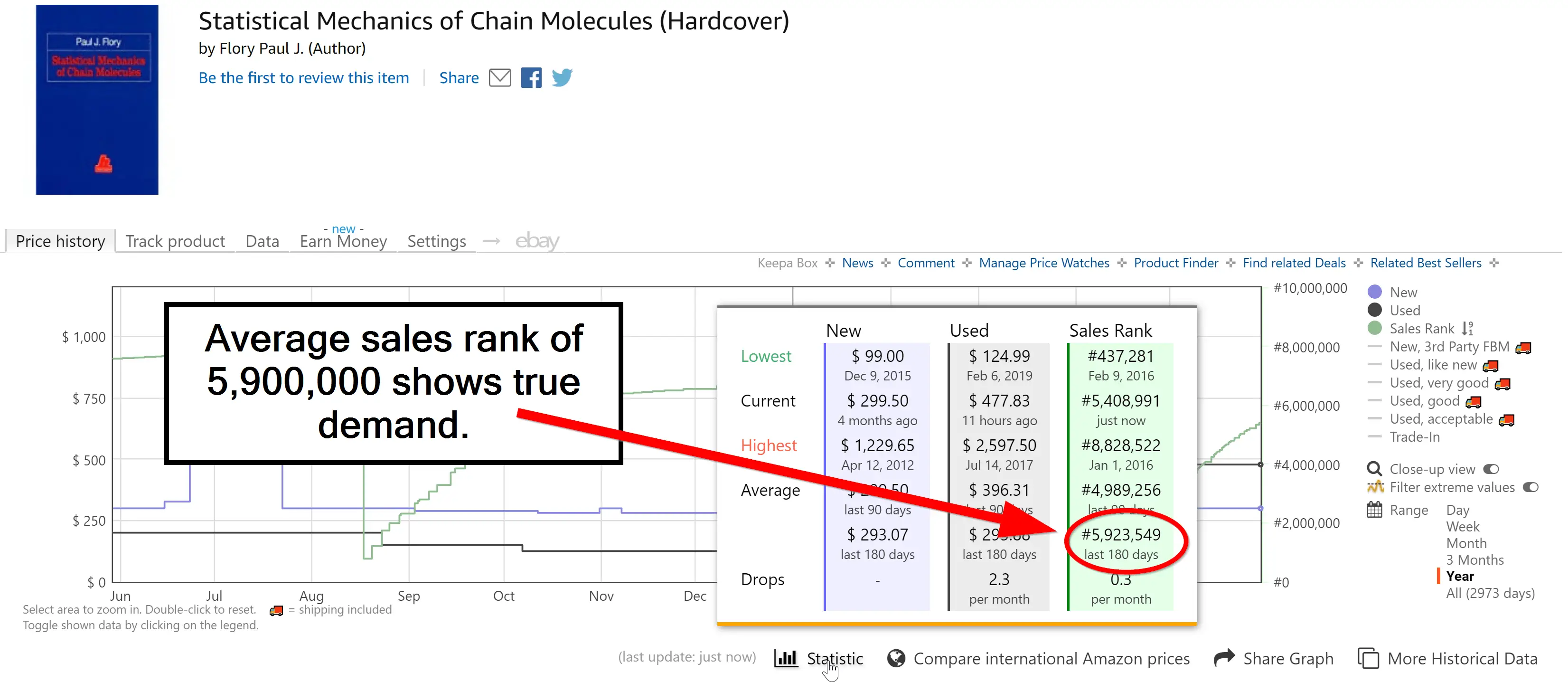
To finish off this example, take a look at the average 180-day sales rank: over 5,900,000. This tells you the book rarely sells, and it would need to be extremely valuable for it to be worth purchasing.
In this particular case, knowing the average sales rank wouldn’t have changed your purchase decision, as a $300 book is worth buying even if it only sells once every two years. But if the book was only worth $15, buying it would have been a mistake.
Note: If you want to check the average sales rank of a book while you’re out sourcing, I recommend using FBAScan as your book scanning app. It’s the only app with a database scanning mode that also shows you the average sales rank. Read my full review of FBAScan if you’re not currently using it, as switching from your current app might be a smart idea.
What different sales ranks actually mean in terms of book demand
Now that we’ve covered current vs. average sales rank, we can talk about what the sales rank numbers actually mean in terms of book demand.
Sales Ranks of 1 – 200,000: Sells at least one book per day
Books with average sales ranks of 1 – 200,000 can vary wildly in the number of copies sold, but for your purposes as an Amazon bookseller, these ranks may as well be the same.
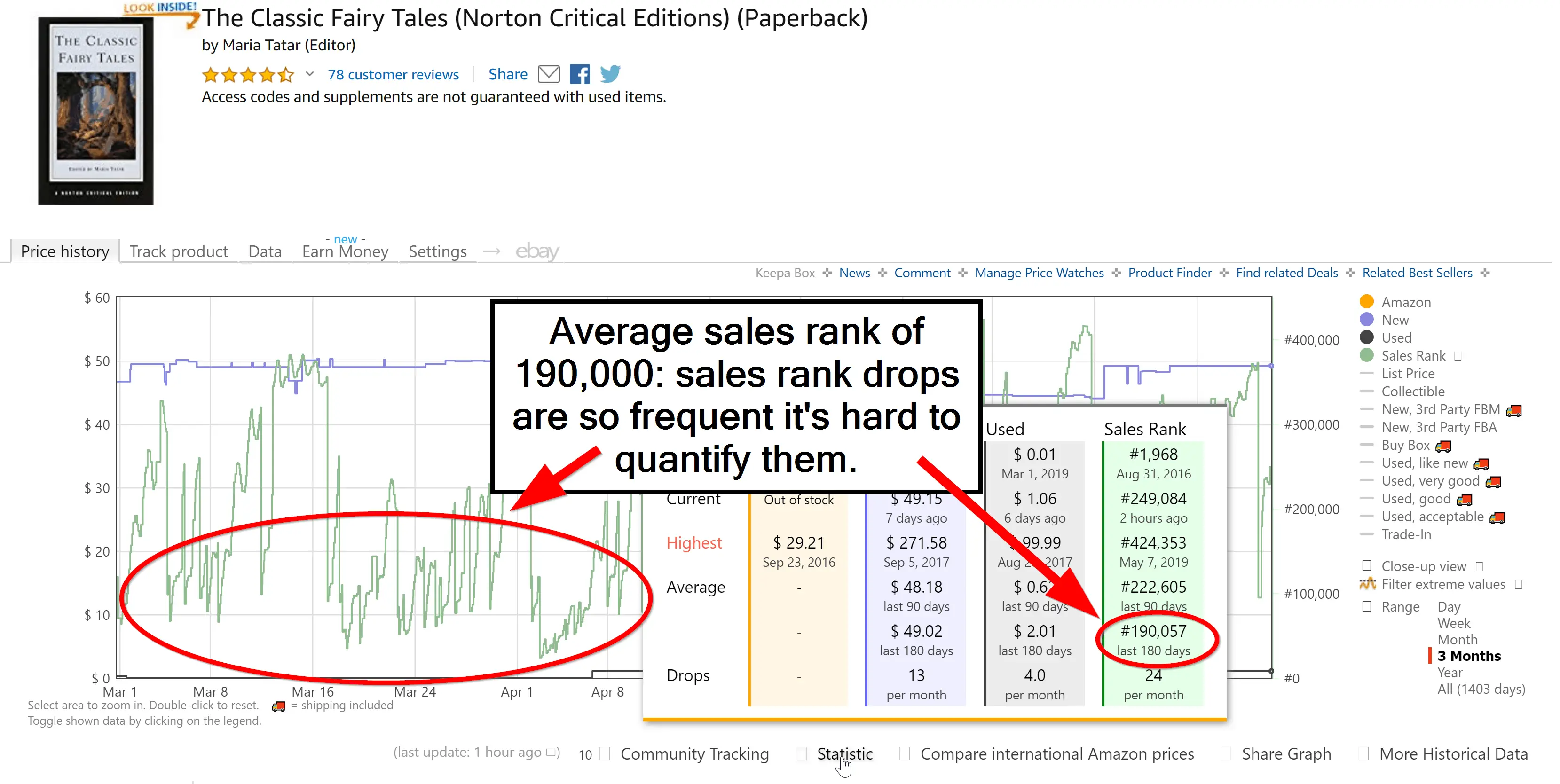
Books that are this in-demand are selling at least one copy per day, which means you can price your copy significantly higher than the lowest offers and stand a good chance of selling it.
Sales Rank of 200,000 – 1,000,000: Sells about 3 to 15 copies per month
Once you surpass the 200,000 mark, the number of sales per month becomes more distinguishable. You can actually begin to trust the number of sales rank drops to indicate a single sale.
Here’s a book (technically an audiobook, but Amazon categorizes it as a book) with an average sales rank of 358,000. The Keepa graph tells us this sells about 13 copies per month.
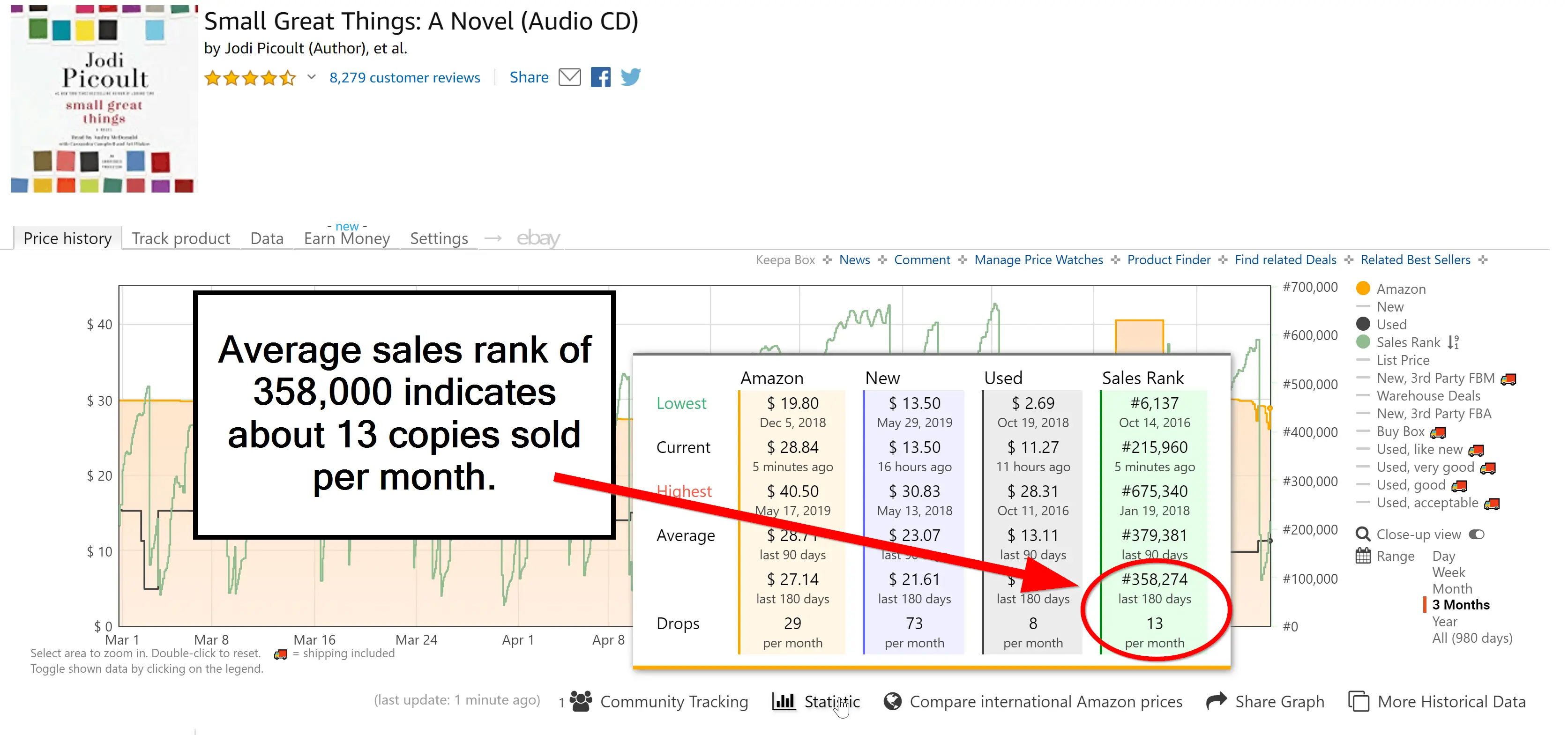
Here’s a book with an average sales rank of 517,000. Keepa’s sales rank drops per month metric tells us this sells about 9 copies per month.
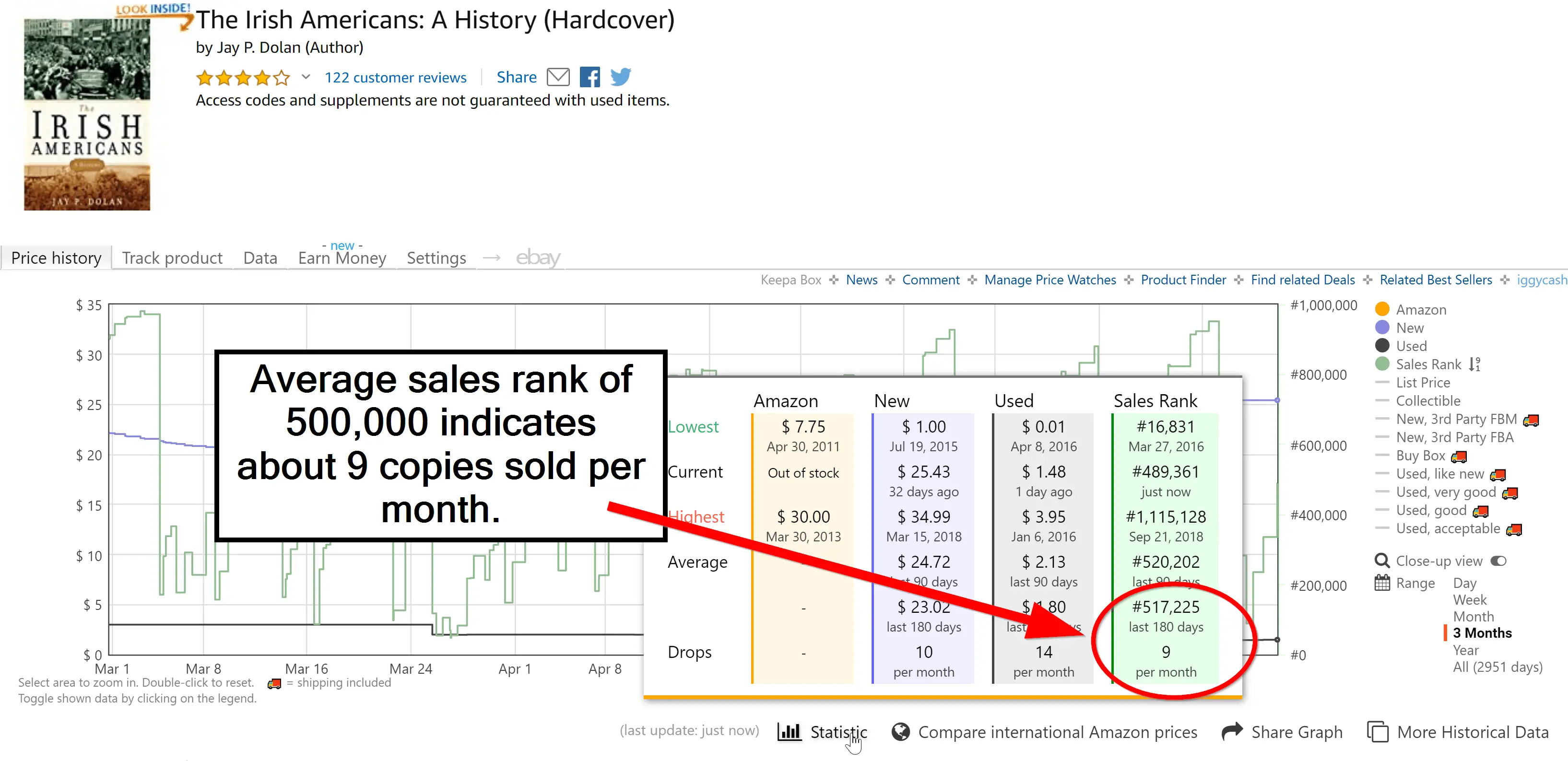
And here we have a book with an average sales rank of 875,000. Keepa shows it sells between 3 and 4 copies per month.
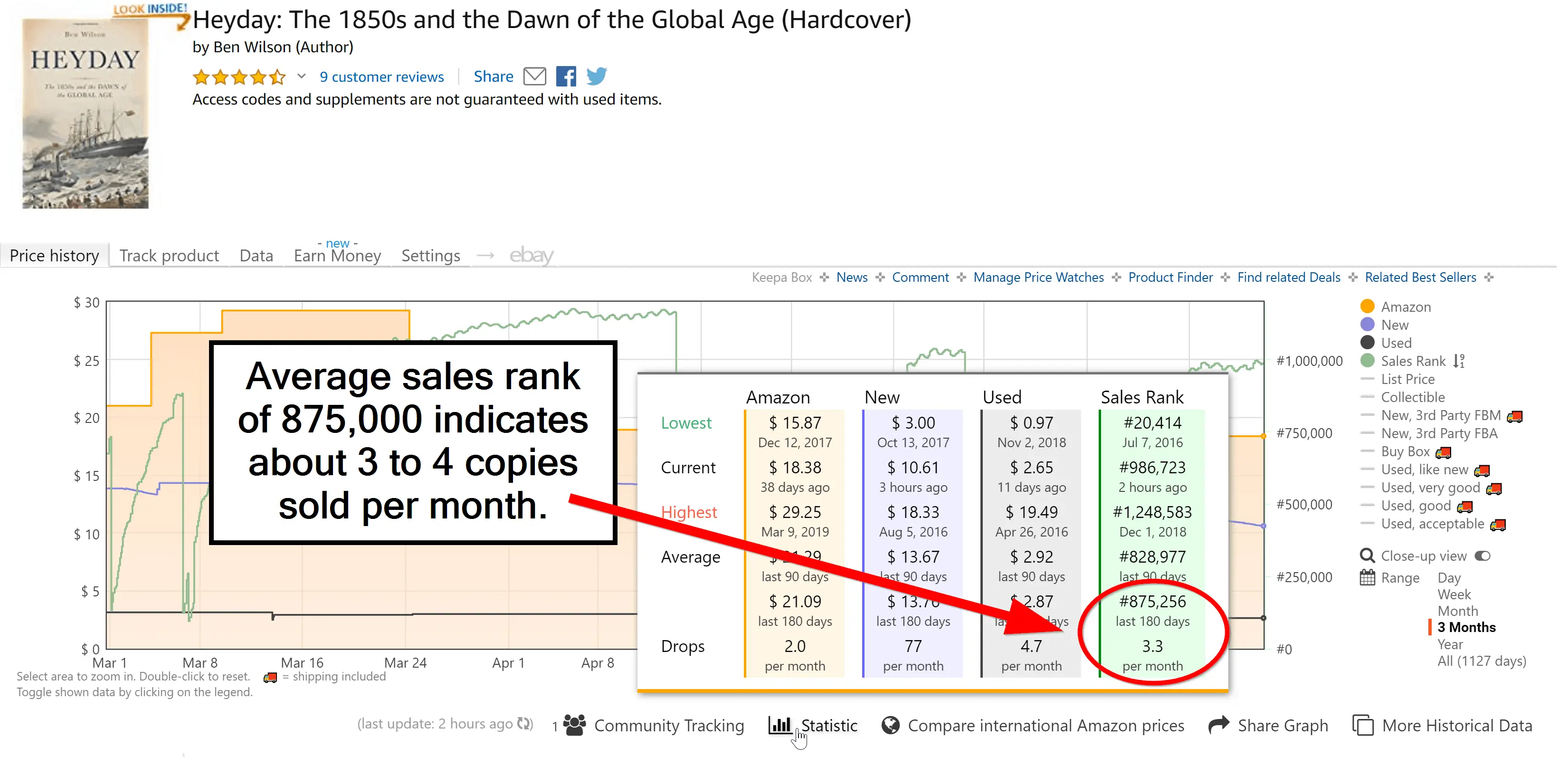
Sales Rank of 1,000,000 – 2,000,000:
Once we pass the 1,000,000 mark, we begin to enter the long-tail book territory. Books with average sales ranks this high aren’t selling that often at all. You need to consider inventory purchases more carefully when dealing with these kinds of books.
First up, we have a book with an average sales rank of 1,071,000. You can expect books around this rank to sell between two and three copies per month.
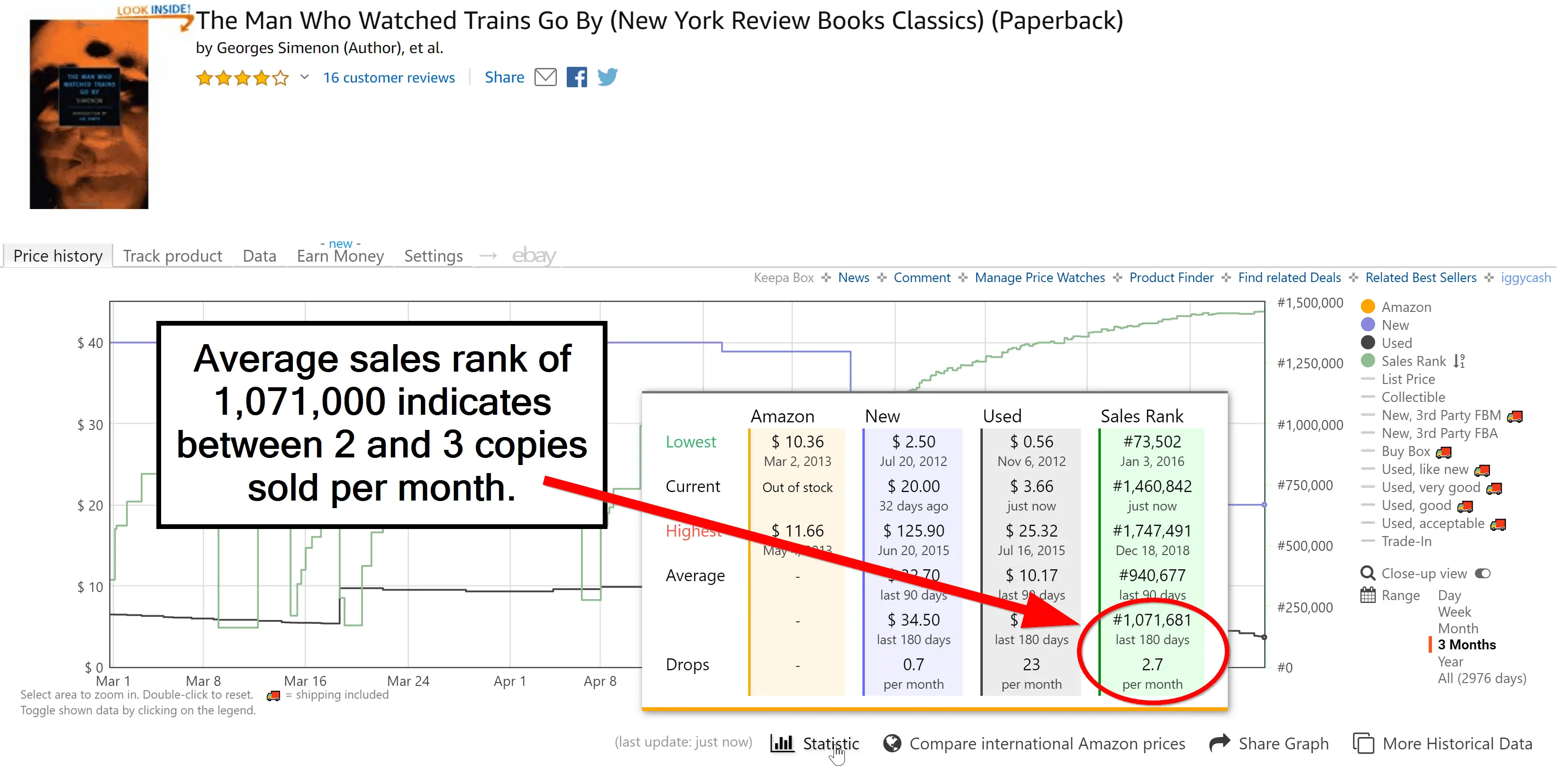
Next we have a book with an average sales rank of 1,322,000. It sells between one and two copies per month.
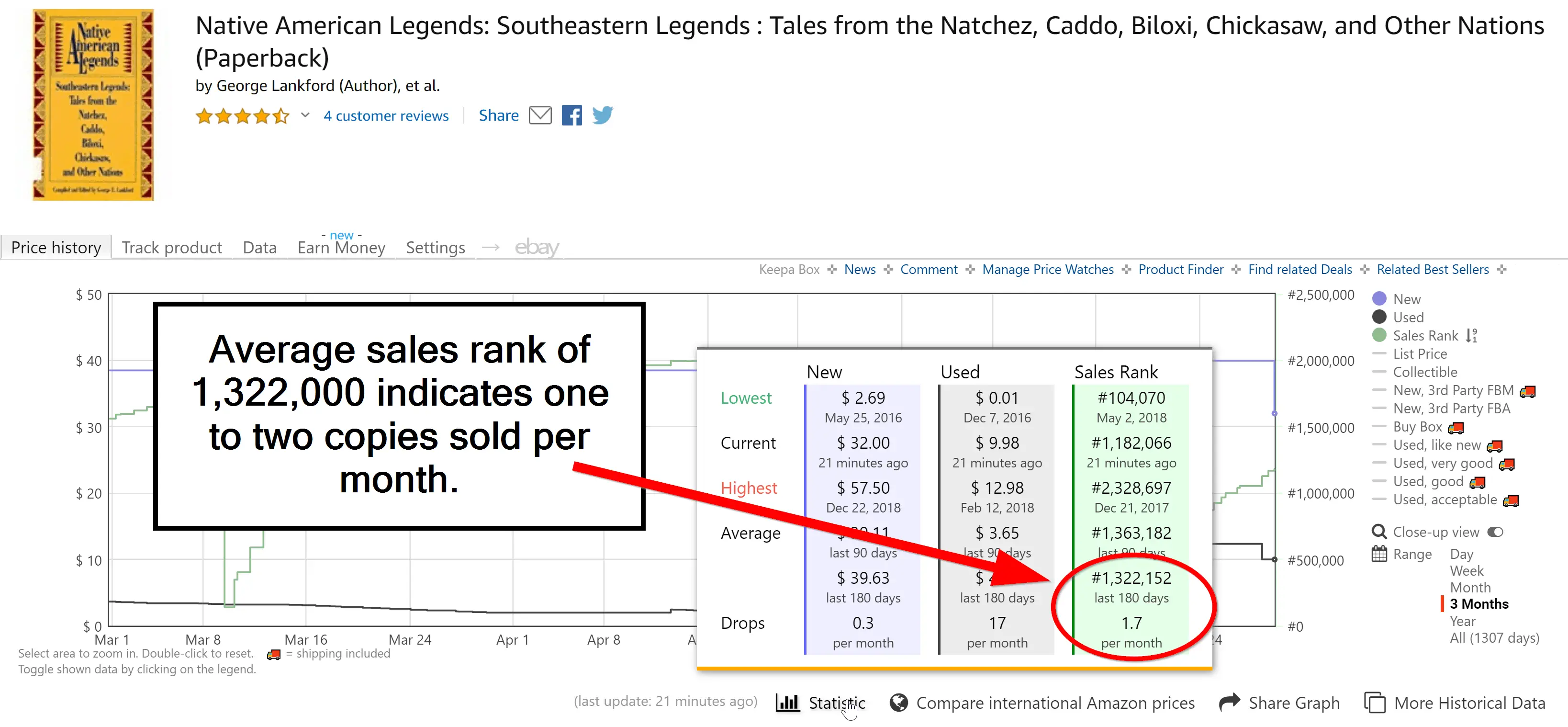
And here’s a book with an average sales rank of 1,690,000. It also sells between one and two copies per month, but tends toward only one copy.
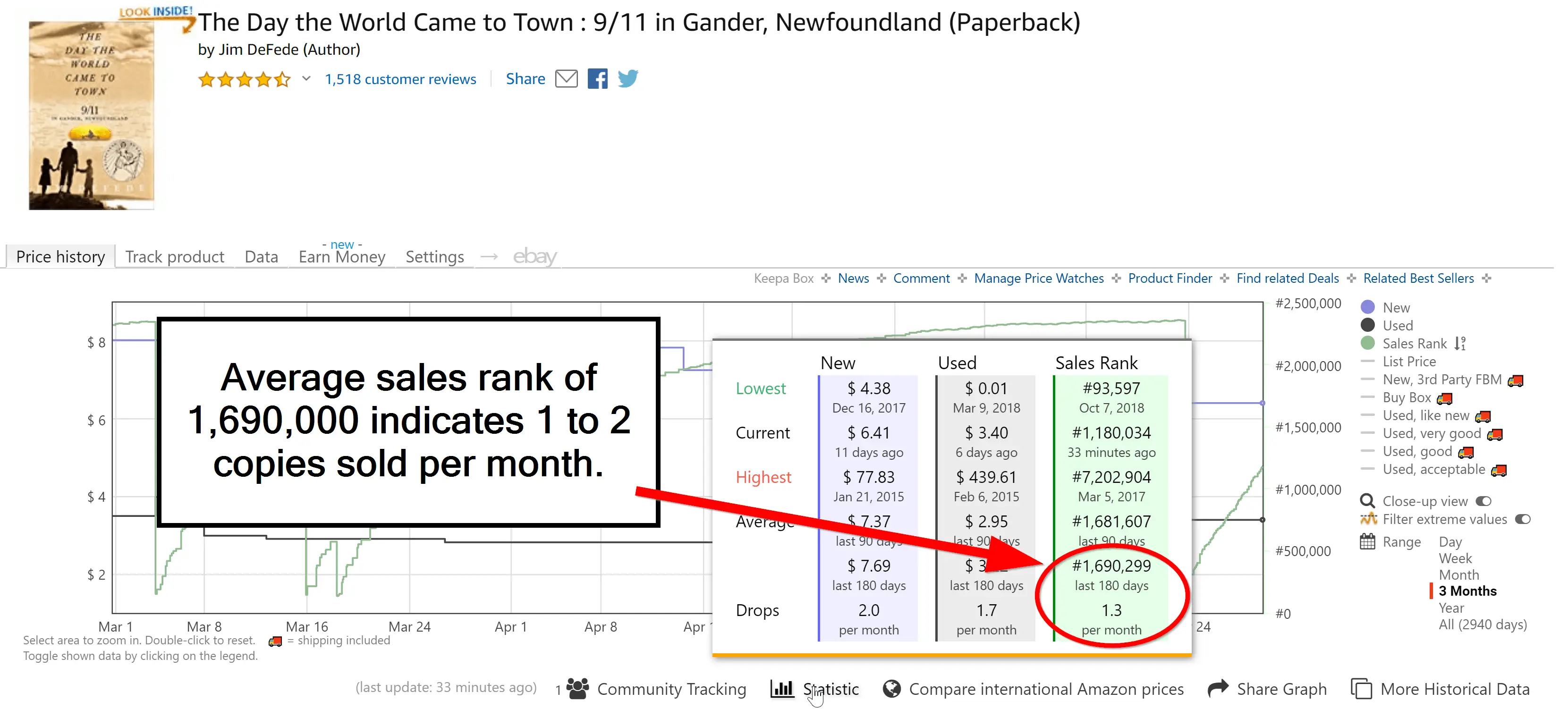
To round off this section, here’s a book with an average rank of 1,800,000. It sells about one copy per month.
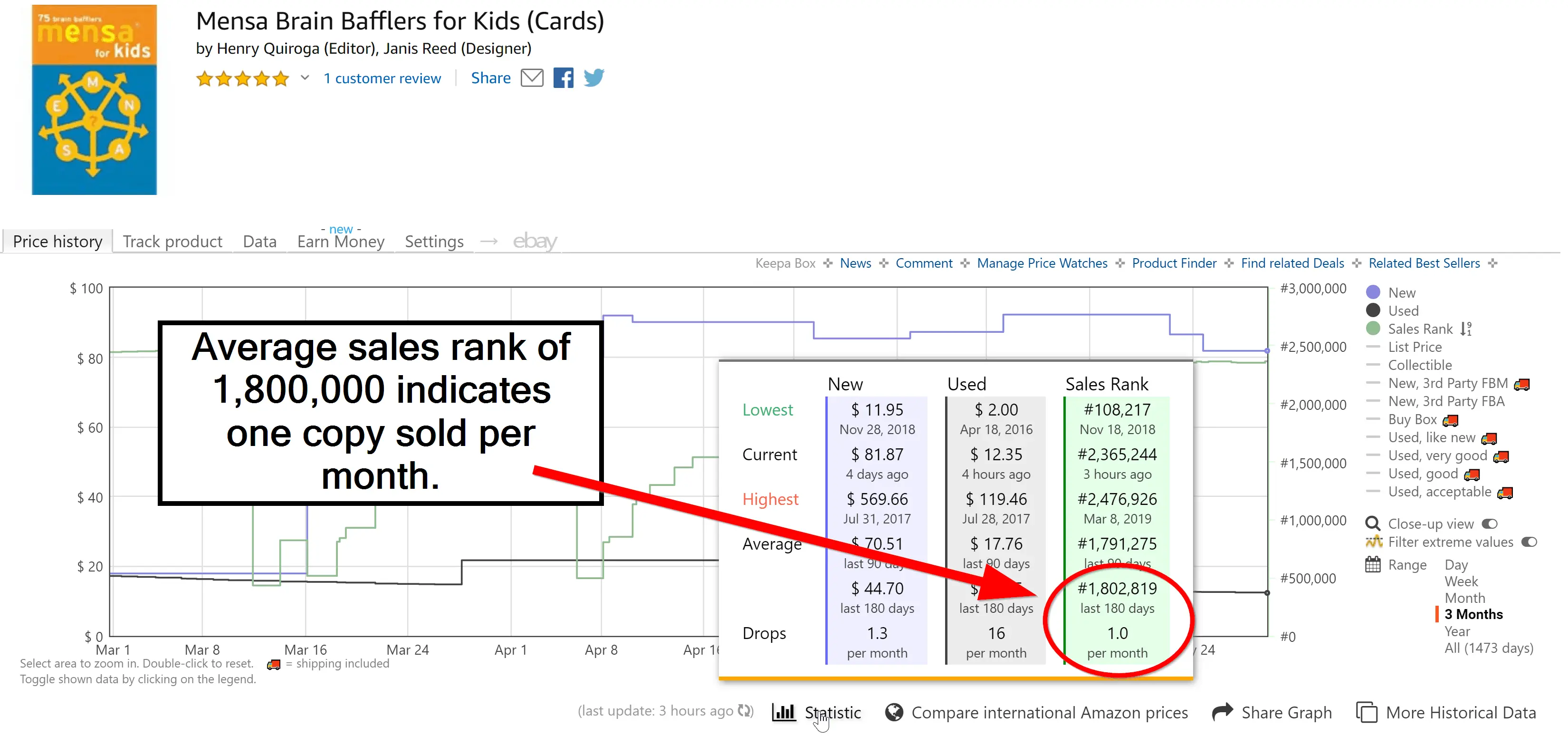
Sales Rank of 2,000,000+
Once you hit average sales ranks of 2,000,000+, there’s a good chance your the next copy won’t even sell until at least three months from now.
Any books you buy at this rank need to be considerably valuable ($20 is my minimum) for you to consider buying them.
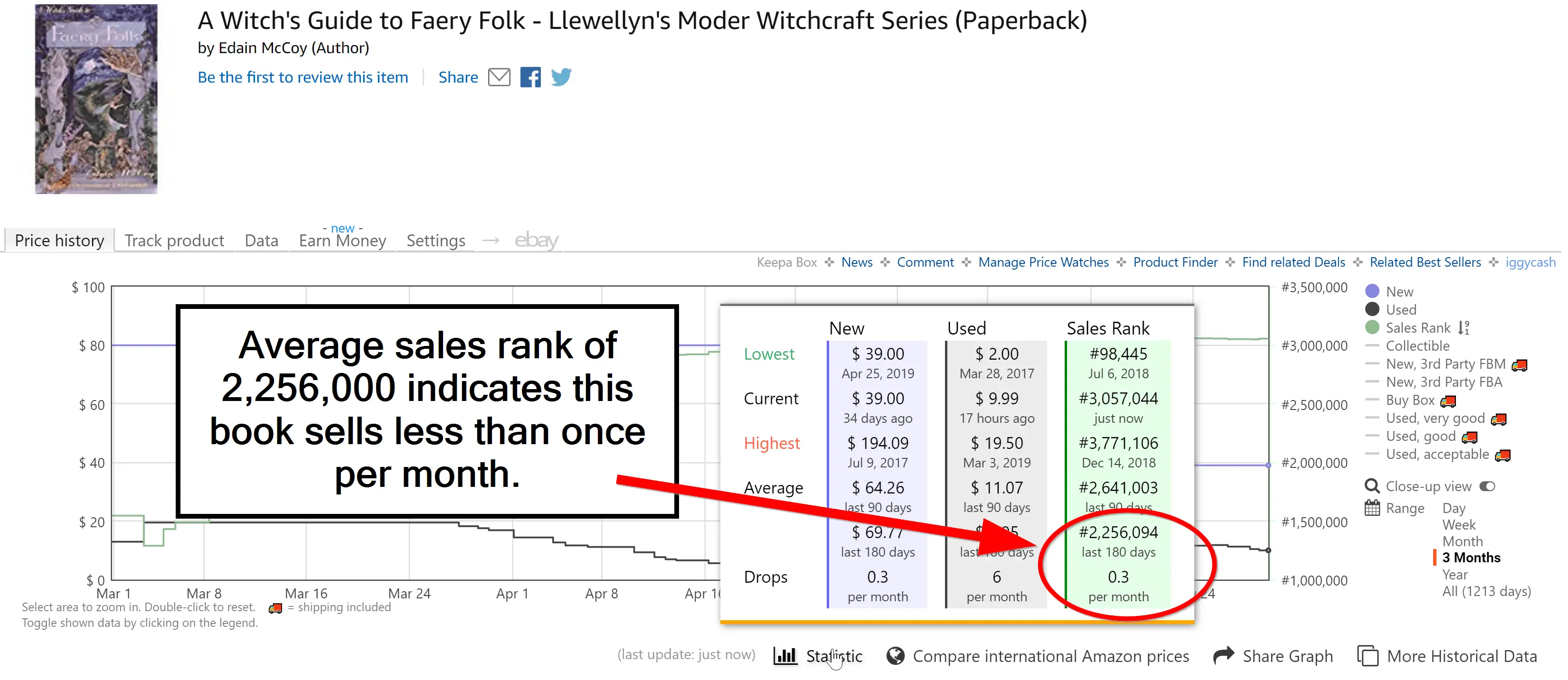
When you should buy a book with a sales rank over 1,000,000
Now that you know how average sales ranks relate to book demand, you need to apply this knowledge to your business.
When a book has a sales rank of less than 1,000,000, you can pretty sure you’ll sell it within a reasonable timeframe. If the book is in decent shape (at least Good condition) and you’re persistent in repricing your inventory, you should have no qualms about buying any book below this rank — even if it only makes you $1.
But once you go above an average rank of 1,000,000, you need to be more selective in your purchase decisions. If you aren’t, you could end up losing money on inventory that sits in Amazon’s warehouse, doesn’t sell, and racks up storage fees.
There is still plenty of profit to be found above 1,000,000 sales rank though. Here are few easily identifiable signs that you should buy a book that doesn’t sell often.
The book is valuable
If a book is worth a lot of money, you should pick it up even if it only sells once per year. I’ve sold quite a few books with 1,000,000+ ranks that netted me at least $100 in profit.
As I stated earlier, $20 is usually my minimum for books that don’t sell often. This allows for a substantial price drop (which often happens when books don’t sell) and still lets me earn a nice profit when it does sell, even when I take into account buy cost and Amazon fees.
You do need to be wary of books with an artificial price rise though. When I buy long-tail books with high sales ranks, I always check the Keepa graph to confirm that the book has actually sold for the price it’s currently sitting at.
Here’s an example of one of these “trap” purchases. This book only has a history of selling for $28.50 at the most:
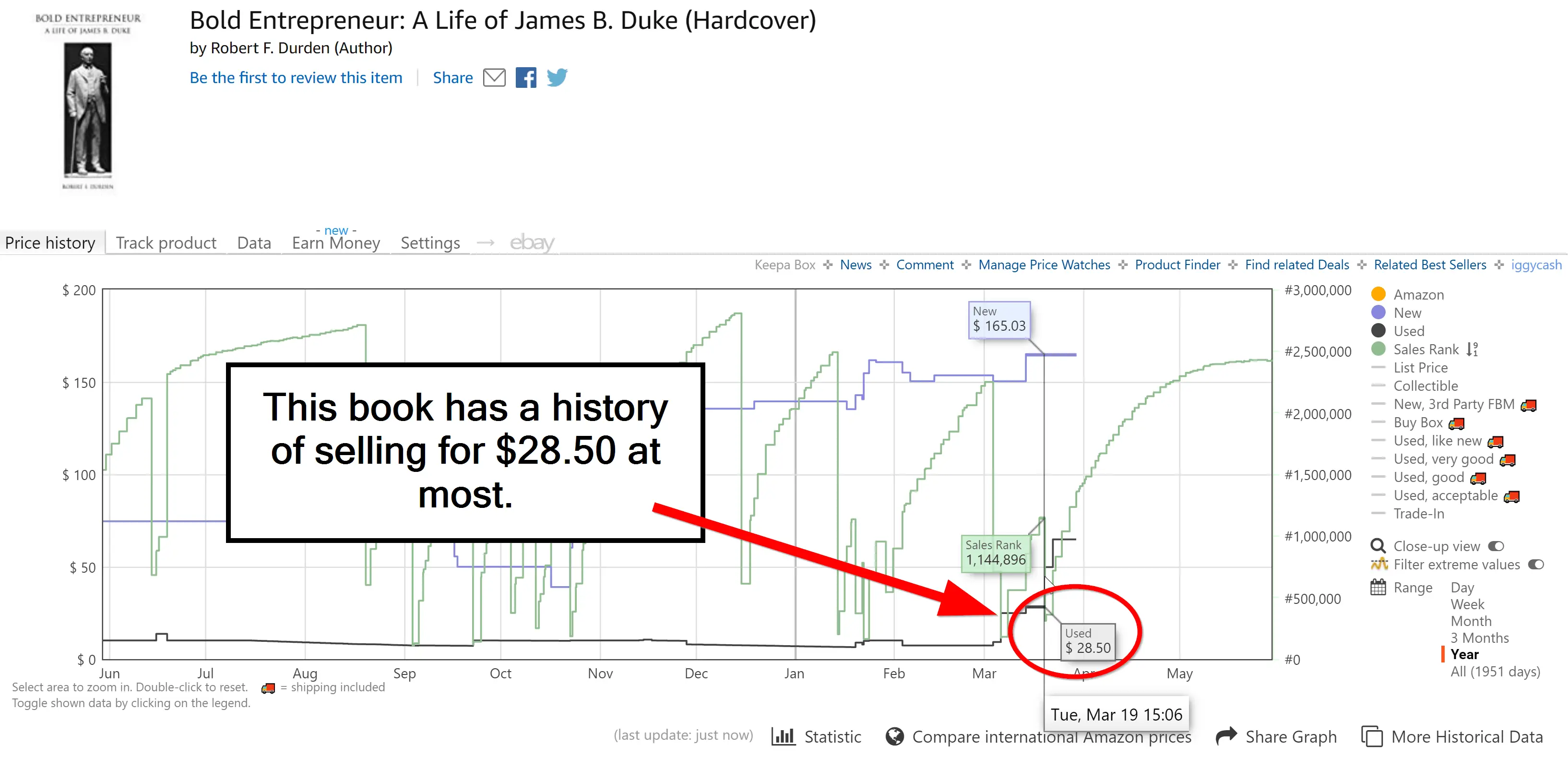
Despite this history, the lowest current offer is a whopping $650.

Because it’s unlikely this book will ever sell at $650, it would be unwise to base your purchase decision on that amount without first checking for some sales history supporting that extraordinary price. If you encounter a book with an astronomically high markup like this, make sure to check the Keepa graph and verify that the book will actually sell at the amount it’s currently selling for.
The book is seasonal
The other instance in which a book with a high sales rank might be worth purchasing is when the book is seasonal.
Here’s an example. If you checked this book with your scanning app, you’d probably think it wasn’t worth your time, as the price would be too low and the sales rank would be too high:
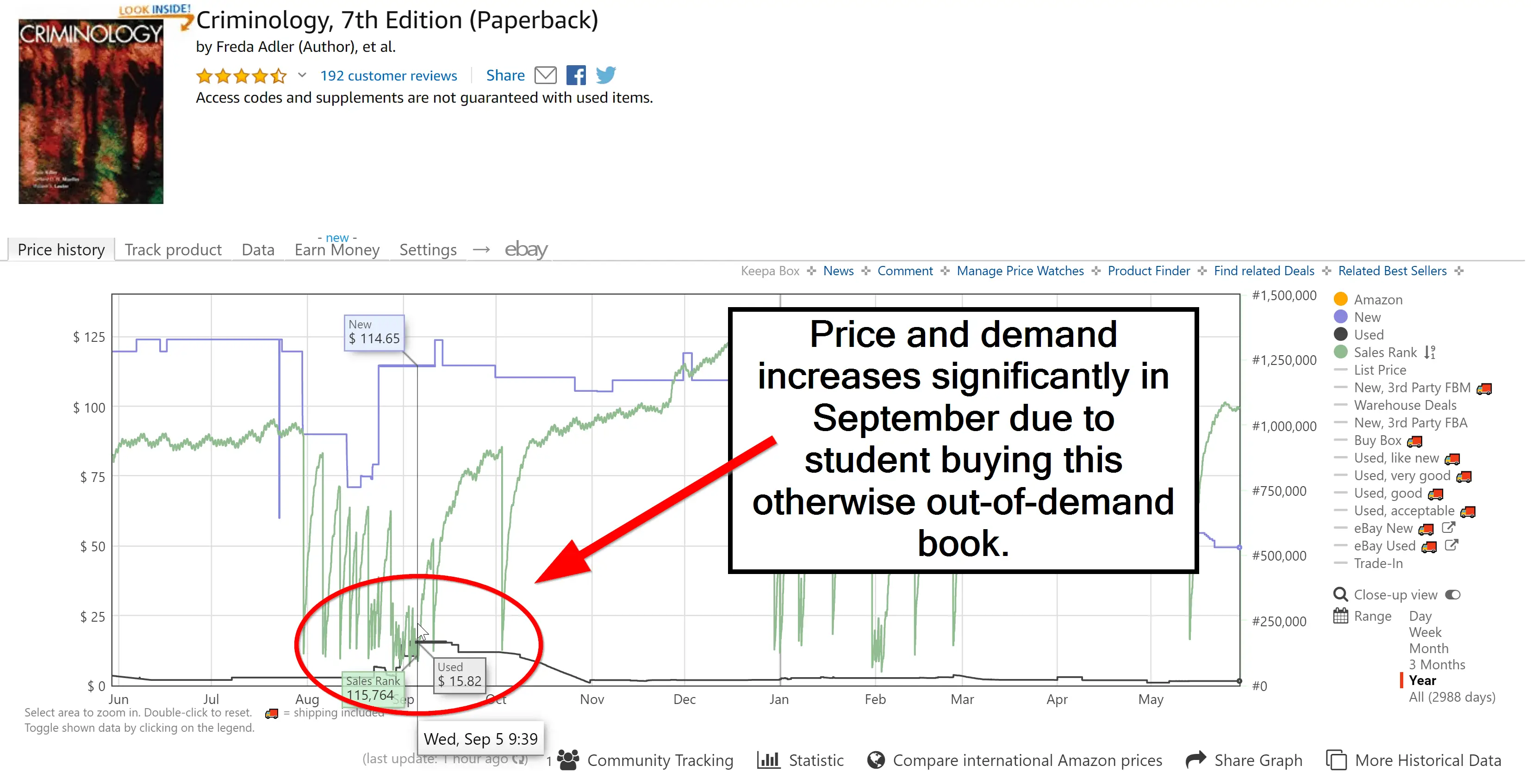
But if you checked the Keepa graph, you’d find out that the price and demand increases significantly during September, when students buy this book for one of their classes.
Related Questions
Can a sales rank be too high?
Yes. Millions of books have never sold a single copy on Amazon. If you find a book with a sales rank of 8,000,000 or more, be very wary, as it might not sell in a billion years.
Do I really need to pay for a Keepa subscription to see sales rank data?
Unfortunately, yes. It’s about $17 per month to gain access to Keepa’s sales rank data. This is not ideal, but it’s not exorbitantly expensive. If you’re serious about making money selling books on Amazon, I recommend biting the bullet and subscribing.


